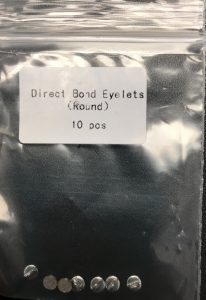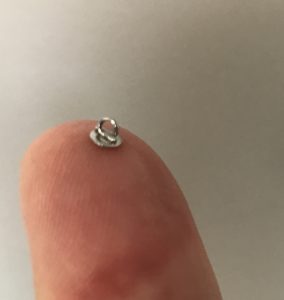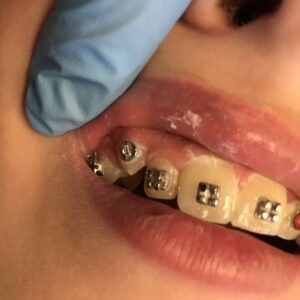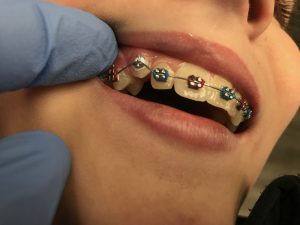Getting high canines or lingual teeth into position is always a pain for us and for patients but it doesn’t have to be that way. If you’ll simply use some open coiled spring to make space for the tooth and then attach a large lumen eyelet to the tooth and then run a small diameter NiTi wire through the loop, there’s nothing to it. We did one today and I thought I’d share this simple trick.
These eyelets are cheap, don’t bind the wire and are comfortable for the patient. Notice that I left a good deal of flash around the eyelet base – this is because the base is flat not contoured. Enjoy.






Ben, are these from smile stream solutions? Seems like most eyelet holes are so small it makes PT or getting a wire through difficult, and these would be perfect. Thanks!
I love these eylets! I use them all of the time for this application as well as on rotated teeth that I can’t get the bracket ideally centered – – the thin wire allows you to place it more in the midline of the tooth. The as the wire rotates the tooth you can bend the wire loop mesial or distal w/o removing the wire to engage the wire more for rotations (have to be a little careful to not torque the base or….pop). I find that I can get most teeth positioned and de-rotated before I pop the eyelet off and place the ‘real’ bracket. Ben – – who do you get the eyelets from?
Let me find out where we get them and get back to you. Agreed that the big eyelet is much better than the small.
They are 6 bucks for a bag of ten and they come from http://smilestreamsolutions.com
Thanks!
For years, I have used a standard button, placed the .014 NiTi wire in the gingival groove of the button and then ligated it lightly with elastic thread. Quick, simple and easy for the assistant. No threading the wire through.
that works. i used to do that as well. as long as the wire doesn’t slip off the button it’s a great solution. thanks for sharing.